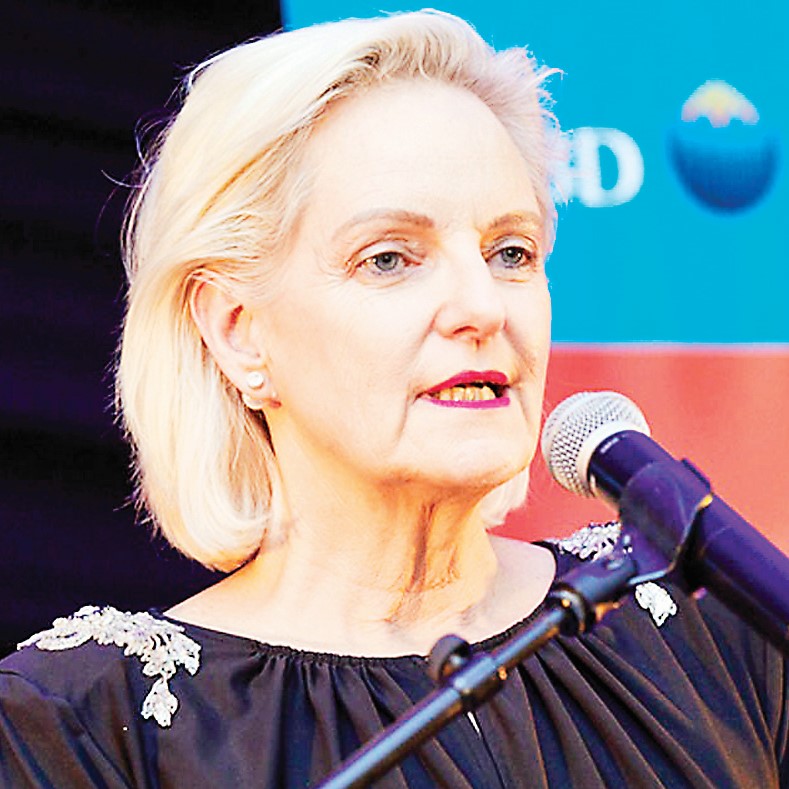
News

Those children who died could have been ours
MARY KLUK
The courage of these extraordinary men and women, all with a number tattooed on their arms, is a source of constant inspiration. But the reality of life beyond them, a time when there will be no more witnesses, was brought home sharply by what survivor Marian Turski said at the start of his address, “I will not live to see another jubilee here, so apologies for my emotions.”
The responsibility to uphold the memory and enduring lessons of the Shoah rests with the generations to come.
No matter how many times I have visited various concentration camps, I’m somehow changed by the time I leave. The enormity of the experience can’t be overstated and, of course, each visit is influenced by one’s life circumstances at the time.
Since my last visit to Auschwitz, we have been blessed with two gorgeous grandsons, Leo and Jàçob, who were at the forefront of my imagination as we walked once more through this factory of death.
In his keynote address at the commemoration, Ronald Lauder, the president of the World Jewish Congress, referred to the tragic testimony of a survivor at the Adolf Eichmann trial, who described how the fading sight of the “little girl in the red coat worn by his daughter” was the last image he had of his wife and young child as they were selected for immediate death.
On Monday morning, when I walked on the slippery stone paths into barracks which now house stomach-churning exhibits of spectacles, suitcases, shoes, and huge mounds of human hair, the sight of a little girl’s plait made me nauseous as all I could visualise was our gorgeous Jàçob recently having his first hair cut (opshering) at the Kotel.
Another survivor spoke of how hurt she was by the loss of her hair, saying, “My crown was taken away from me, and I became a pitiful creature. Who would think that our hair would be used for mattresses! What they were really after was depriving me of myself.”
More than a million Jews were brutally murdered at Auschwitz. Words like gas chambers, mass graves, pits, corpses, crematoria rolled off the tongue of our guide. Along with elderly people, children had the lowest rate of survival. People over fifty years of age, pregnant women, and young children were immediately sent to the gas chambers. Of the almost one million Jewish children in 1939 Poland, only about 5 000 survived. Most of them only by being in hiding.
During an intimate memorial service at crematoria 4, my colleague and friend, Menachem Rosensaft, read this heart-wrenching poem he wrote about his murdered brother:
A Refusal to Forgive the Death, by Gas, of a Child in Birkenau
whom should I forgive?
why should I forgive?
how can I forgive?
children
hundreds
of children
thousands
thousands upon thousands
of children
hundreds of thousands
of children
more than one million children
starved
beaten
typhus-ridden
shot
hung
gassed
but I see
one child
only one child
always one child
always the same child
a five-and-a-half-year-old boy
Benjamin
my mother’s son
my mother’s child
his ashes diffused
toward the stars
almost three years
before I was born
once upon a time
my brother
used to laugh
used to play
used to sing
used to have
tomorrows
but that was before
before the train
before arrival
at a place
with a German name
before one last hug
one last kiss
before he went
with his father
and grandparents
into a blackness
without end
whom should I forgive?
why should I forgive?
how can I forgive?
And my mind wandered to our precious Leo, who at the same age as Benjamin started Grade 1 last week.
I returned to the bus and switched on my phone. The first message I opened was from my son, a beautiful photograph of the “36-week scan” of PG, our next precious grandchild, due next month. In my joy, my thoughts drifted to the incomprehensible fact that 1.5 million children’s lives were brutally cut short by hatred.
May the memory of the victims live eternally.
- Mary Kluk is the president of the South African Jewish Board of Deputies, and the director of the Durban Holocaust and Genocide Centre.




